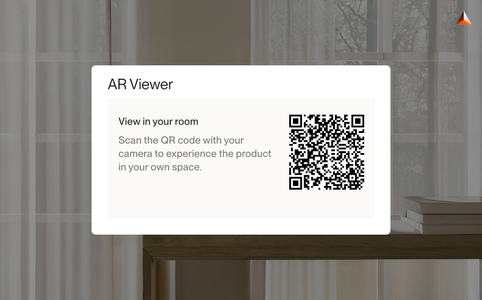In the last five years, eCommerce has evolved from static product photos to dynamic, interactive shopping experiences. Today, Augmented and Virtual Reality configurators are no longer futuristic concepts—they’re business-critical tools for any brand that wants to stay competitive.
If you’re leading an eCommerce brand, you’ve likely seen how quickly immersive commerce is shifting customer expectations. Shoppers now want to design, visualize, and even interact with products in 3D before making a purchase. And the brands delivering this capability are winning on engagement, conversions, and retention.
Let’s break down exactly how eCommerce product configurator solutions—powered by AR and VR—are shaping the future, what benefits they bring, and where this technology is headed.
Get the latest updates straight to your inbox.
By clicking sign up you'll receive occasional emails from imagine.io. You always have the choice to unsubscribe within every email you receive.
From Static Images to Interactive Product Visualization
Traditional product photos are flat. They don’t convey texture, scale, or real-world context. This limitation is one of the biggest reasons online returns remain high—customers simply can’t gauge what they’re buying. With interactive product visualization, powered by eCommerce customization tools, customers can:
- Rotate and zoom in on every detail
- Swap colors, materials, or patterns instantly
- See real-time pricing changes as they configure options
This hands-on interaction mimics the in-store experience, building confidence in purchasing decisions.
How AR Product Configurators Transform Online Shopping

An AR product configurator lets shoppers project a 3D version of a product into their real environment using a smartphone or tablet camera.
For example, imagine a furniture brand allowing customers to drop a sofa into their living room virtually—checking its fit, color, and style against existing décor. This is not just cool tech; it’s a revenue driver.
Benefits include:
- Reduced Returns – When customers see exactly how a product fits in their space, guesswork disappears.
- Increased Conversion Rates – AR visualization can boost purchase confidence by up to 94%, according to industry studies.
- Higher Average Order Value (AOV) – Shoppers who customize products in AR are more likely to add premium upgrades.
And here’s where imagine.io makes AR simple: once you have a 3D model of your product, AR is generated automatically. There’s no need for extra dev work or specialized apps — it works instantly on any device with a camera and internet access. This removes the biggest barrier for brands wanting to scale AR quickly.
The Role of VR Product Configurators in Immersive Commerce
While AR blends the digital and physical world, VR goes fully virtual. A VR product configurator allows shoppers to step inside an entirely digital showroom or product environment—often using headsets like Meta Quest or HTC Vive.
For eCommerce brands, VR opens up possibilities such as:
-
Virtual Stores – Full-scale 3D environments replicating in-person shopping experiences.
-
Product Demonstrations – Showcasing large or complex products without physical inventory.
-
Collaborative Customization – Enabling teams or clients in different locations to configure products together in real time.
Product Personalization in eCommerce: Why It Matters Now
The modern consumer expects product personalization in eCommerce. Shopify found that products with AR experiences can increase conversion rates by up to 250%.
Whether it’s choosing fabrics, adding engravings, or modifying dimensions, customization is becoming a standard, not a luxury.
AR and VR tools make personalization instant, visual, and error-free—something flat product pages can’t achieve. For B2B brands, this translates to fewer back-and-forth, shorter sales cycles, and a stronger brand image.
How 3D, AR, and VR Tools Reduce Product Returns
Returns are one of the costliest problems in eCommerce. Misaligned expectations—color mismatch, wrong size, or poor fit—account for the majority of them. Shopify merchants using 3D/ecommerce visualization technologies have observed up to a 40% reduction in product return rates. By providing immersive product configuration:
- Customers make informed decisions based on accurate 3D models.
- Real-time visualization reduces “surprise” upon delivery.
- Retailers save millions annually on reverse logistics.
Best AR Configurators for eCommerce Brands

While many platforms claim to offer AR functionality, not all are built for scalability, speed, or cross-device performance. The best AR configurators for eCommerce brands have these key features:
- Seamless integration with your existing eCommerce platform
- High-fidelity 3D rendering for true-to-life visuals
- Fast loading times for mobile users
- Ability to combine AR, VR, and 3D configurators in one toolset
Platforms like imagine.io are leading in this space, enabling brands to build, customize, and deploy AR/VR product configurators without heavy dev work.
What is the Future of eCommerce Visualization?
Looking ahead, AR and VR configurators will become as common as product photos are today. Emerging trends include:
- AI-driven customization – AI suggesting configurations based on user preferences.
- Mixed Reality (MR) – Blending AR and VR for seamless transitions between real and virtual worlds.
- Voice-activated customization – Customers designing products via voice commands.
- Social AR shopping – Group shopping experiences in shared virtual spaces.
For B2B brands, this isn’t just a tech upgrade—it’s a customer experience revolution.
Conclusion
AR and VR configurators are no longer “nice-to-have” tools—they’re becoming the foundation of competitive eCommerce strategy. From product personalization in eCommerce to reducing returns and increasing conversion rates, immersive visualization delivers measurable business value.
If your brand is ready to move beyond flat images and embrace immersive commerce, now’s the time to invest in a scalable, integrated eCommerce product configurator solution.
Get Free Trial with imagine.io today and see how your products can sell themselves through interactive, immersive experiences.


.gif?width=1296&height=1296&name=Untitled%20design%20(8).gif)




.png?width=500&name=How%20to%20Add%20a%203D%20Product%20Configurator%20to%20Your%20WordPress%20Website%20(Complete%20B2B%20Guide).png)
















%20(1).png?width=500&name=Why%20Exploded%20Mattress%20Views%20Matter%20(And%20How%20to%20Generate%20Them)%20(1).png)
.png?width=500&name=Best%20Shopify%20Product%20Configurator_%20How%20to%20Choose%20the%20Right%20One%20(2).png)
.png?width=500&name=Why%20Exploded%20Mattress%20Views%20Matter%20(And%20How%20to%20Generate%20Them).png)



.png?width=500&name=Best%20Shopify%20Product%20Configurator_%20How%20to%20Choose%20the%20Right%20One%20(1).png)







.png?width=500&name=How%203D%20Rendering%20Can%20Make%20or%20Break%20Your%20Industrial%20Design%20Pitch%20(1).png)








%20with%20Digital%20Twins%20and%203D%20Visualization.png?width=500&name=Optimizing%20Your%20Digital%20Asset%20Management%20(DAM)%20with%20Digital%20Twins%20and%203D%20Visualization.png)




.png?width=500&name=Styling%20Home%20Decor%20for%202025_%20From%20Global%20Influences%20to%20Playful%20Personalization%20(1).png)
